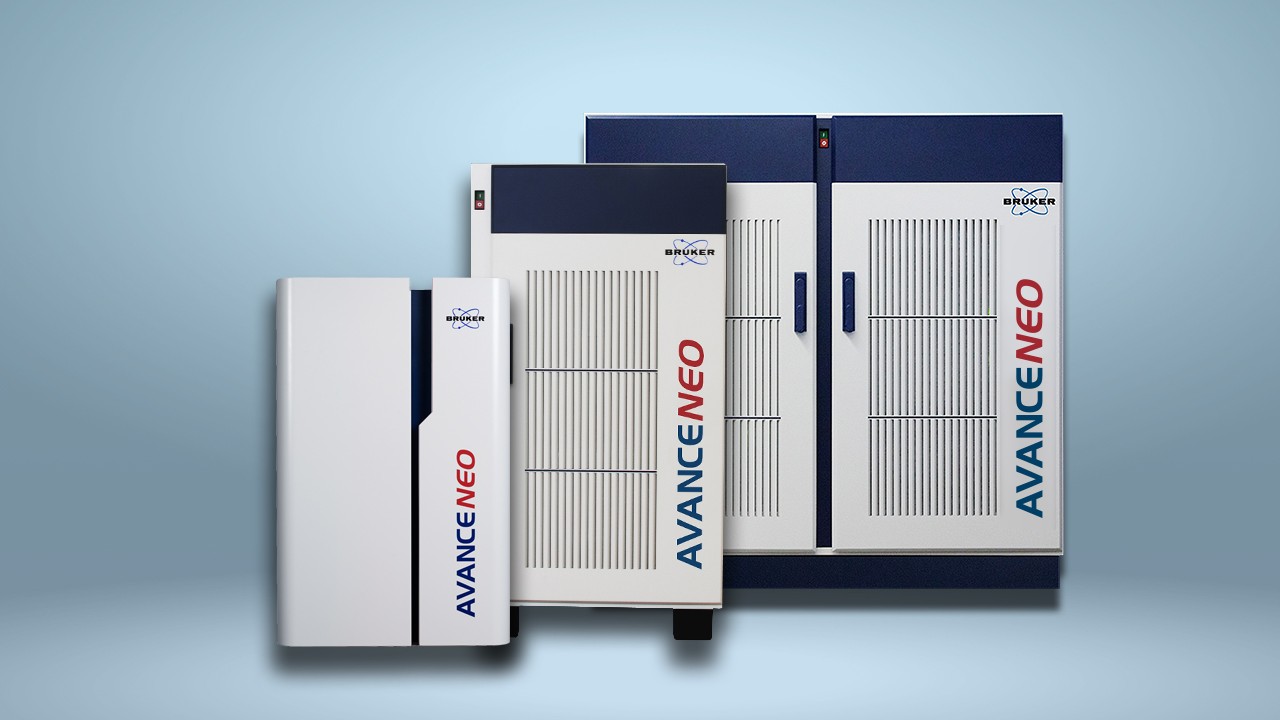

New in Bruker User Library: a Family of Experiments for Fast, Sensitivity-Enhanced TOCSY and NOESY Biomolecular NMR
Multidimensional TOCSY and NOESY lie at the foundation of homonuclear NMR correlation experiments. Low sensitivity is an intrinsic downside of these polarization transfer methods – particularly for systems involving fast relaxing or rapidly exchanging, labile protons. We have recently introduced Looped PROjected SpectroscopY (L-PROSY),1 an approach that actually exploits relaxation and exchange to enhance NOESY and TOCSY cross-peaks for amide, hydroxyl and amine groups.
The present contribution introduces a family of experiments leading to even larger sensitivity gains per unit time, based on frequency-selective saturation or looped inversion procedures.2 Then, provided that the spectrum is sparse and that the different frequency-specific “channels” (peaks) can be individually addressed, experiments that are much faster (fewer scans) and more sensitive (per scan) than conventional or L-PROSY counterparts, can result.
The experiments are based on magnetization-transfer (MT) phenomena and their sequences are given in Figures 1A and 1B. In these, exchangeable (or fast-relaxing) protons are sequentially addressed via long monochromatic saturation pulses (Selective MT – SMT for correlations within the same spin pool) or with a train of inversion pulses according to the Hadamard encoding recipe (Hadamard MT – HMT for correlations between spectrally-distinct spin pools).3 MT processes reminiscent of those occurring in CEST, where the labile proton’s saturation is magnified by replenishments from the solvent,4 then provide significant enhancements in the resulting homonuclear cross peaks; while the selective irradiation strategies provide these in a fraction of a normal 2D experiment’s acquisition time.
We provide here user-friendly pulse programs that support the use of WaveMaker for setting up these shaped-pulse experiments, including the possibility of selective excitation and refocusing in SMT, and of water flip-back in HMT –both of these enabling short recycling times in aqueous solutions.
The methods are general and can be used to target fast exchanging/relaxing protons in small molecules, polysaccharides, RNAs and protein systems. Figures 1C and 1D illustrate their use on the imino protons of 5_SL5B+C, SARS-CoV-2 RNA fragment: the SMT version is used to enhance the imino-imino NOESY correlation spectrum, while the HMT version provides NOESY connectivities between the imino protons and other protons in the RNA –with an added multiplexing advantage (NB: Do not try HMT to establish correlations within the same pool of protons as the spin dynamics just doesn’t work; use SMT instead). Notice that these experiments can be implemented at conventional fields, but gain from ultrahigh field operations where peaks are better separated (important for the Hadamard encoding) and where T1s are long (important for enhancing the MT aspects of the correlations).
These concepts can be exploited in other NMR settings where fast-repolarizing sites can be individually addressed –including protons in paramagnetic systems, and small molecules where, instead of chemical exchange, repolarization happens by fast polarization sharing (ASAP).5 The 2D concepts introduced here can also be included within higher, 3D correlations involving heteronuclei; MT-based pulse sequences implementing this will be released shortly.
Mihajlo Novakovic1, Ēriks Kupče2, Harald Schwalbe3 and Lucio Frydman1
1Department of Chemical and Biological Physics, Weizmann Institute of Science, 7610001 Rehovot, Israel
2Bruker UK Ltd., Banner Lane, Coventry, UK
3Institute for Organic Chemistry and Chemical Biology, Center for Biomolecular Magnetic Resonance, Johann Wolfgang Goethe-University, D-60438 Frankfurt/Main, Germany
References
- Novakovic, M.; Cousin, S. F.; Jaroszewicz, M. J.; Rosenzweig, R.; Frydman, L. Journal of Magnetic Resonance 2018, 294, 169.
- Novakovic, M.; Kupče, Ē.; Oxenfarth, A.; Battistel, M. D.; Darón, I.; Schwalbe, H.; Frydman, L. arXiv: 2004.13063
- Kupče, E.; Nishida, T.; Freeman, R. Progress in Nuclear Magnetic Resonance Spectroscopy 2003, 42 (3–4), 95.
- Van Zijl, P. C. M., & Yadav, N. N. Magnetic Resonance in Medicine, 2011, 65(4), 927.
- Kupče, E.; Freeman, R. Magnetic Resonance in Chemistry 2007, 45 (1), 2.


